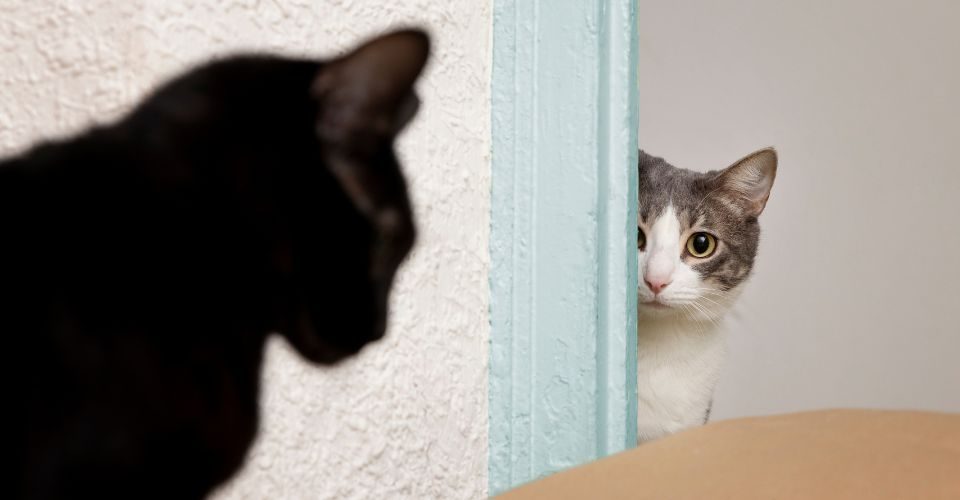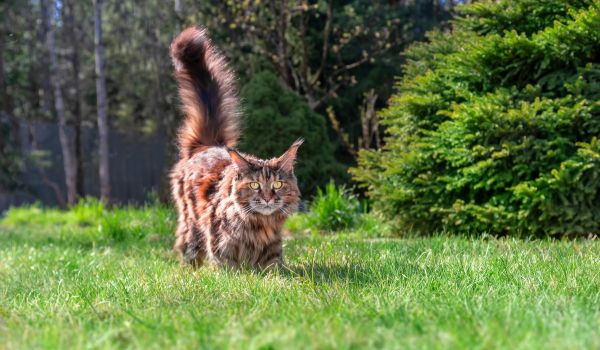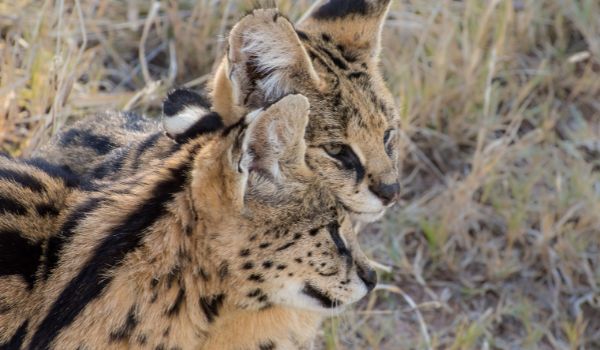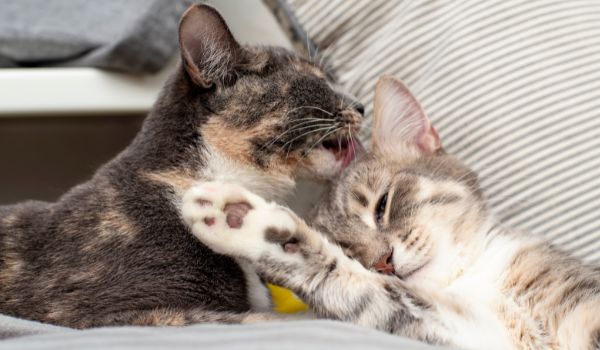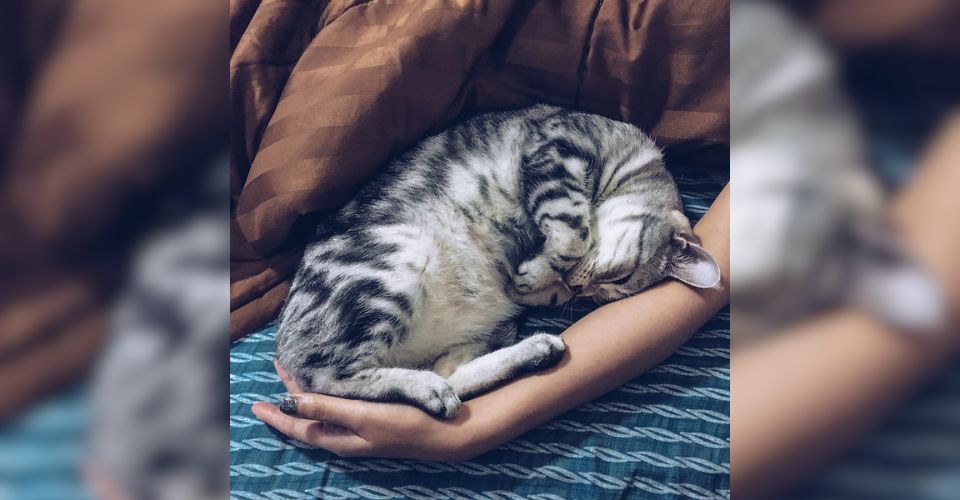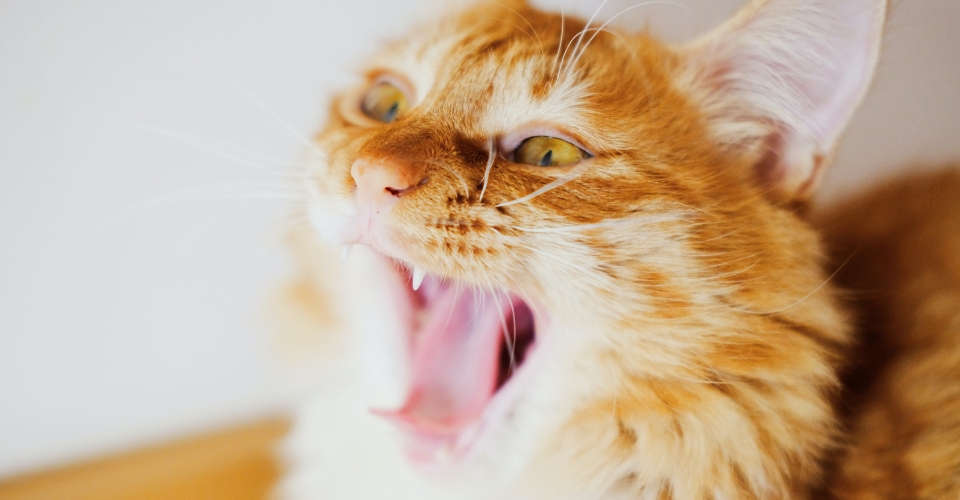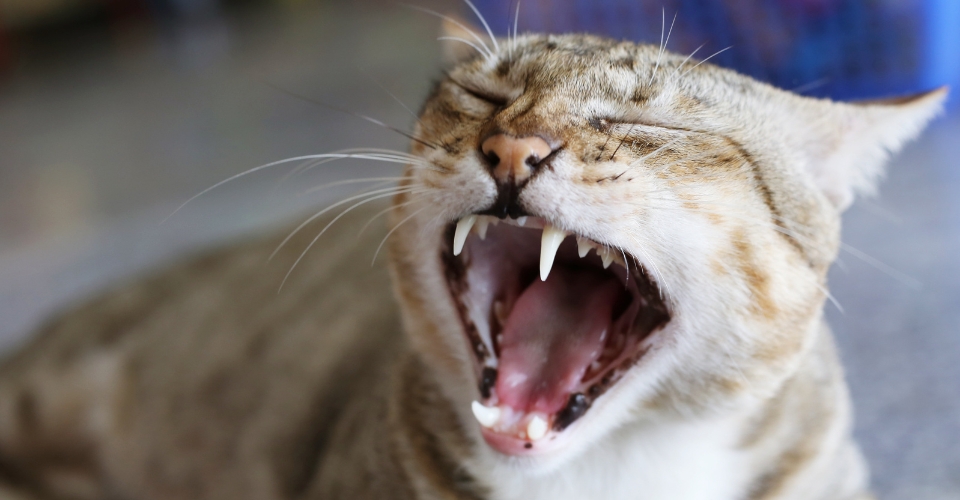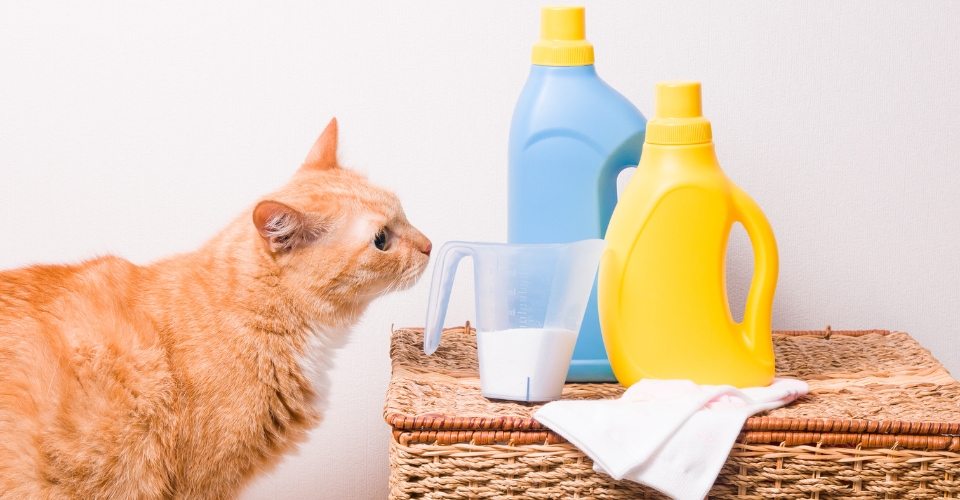So, you are a loving cat parent upset by a change in your cat’s behavior? Like your beloved ball of fur seems to have its attention directed towards a magnet outside the home. You see it wandering too often in the neighbor’s home, trying to develop a bond with their cat.
At this point, you may ask yourself: Is my cat in love with the neighbor’s cat? We are sure you had a solid basis for the speculation, and it is about time we explored what exactly construes a cat-to-cat love and if your feline is indeed smitten by love.
Can Cats Fall in Love?
Yes and no—the answer is a bit complicated. Research suggests that cats are historically territorial and prefer to live a solitary living. Nonetheless, they are a social species; feral cats are known to form colonies centered on the matriarch, including related (mostly female) cats. So, the social relationship closest to love involves affection, where they solicit and bestow displays of social bonding.
So, if you notice two cats approaching with a tail up, rubbing, grooming, and purring, the two kitties are very fond of each other. Such relationships, however, can only form in conditions of the abundant supply of resources vital to their survival, such as food, water, shelter, and choice of mate in case of un-neutered or un-spayed animals.
Signs Your Cat Is in Love with Another Cat
Okay, so we do know now felines tend to form social bonds with their fellow species. We have seen this happen with breeds like Siamese or British Shorthair, where they would rather have the company of their fellow species or dogs than be by themselves.
But more than speculation, there are subtle signs that a cat has a strong fondness for another cat. Whether or not it is reciprocated can also be viewed through the lens of these signs.
tish Shorthair, where they would rather have the company of their fellow species or dogs than be by themselves.
1. Approaching another Cat with Tail up Position
If you have had the knowledge or the chance to look up the cat social signaling, you would have a familiarity with the tail-up posture and its link to positive social signaling. It is widely recognized as a means of communicating friendliness, such as attempts to greet a fellow species or an interesting human. It is a learned behavior that a kitten observes from its mother or caregiver while still being provided for. It is then used to reciprocate the love or demand food first from the mother and then extended to the humans.
Our beloved fur balls use the same signal to approach another cat when trying to be friendly or pleasantly curious. So, if you notice your kitty approaching the neighbor’s feline with a tail up quite often, it is safe to say it is interested in hanging out with the other.
2. Showing Submissiveness
It is common in a dominance-based system where the felines establish a non-linear sort of hierarchy in which the powerful must be shown submissiveness. It involves signs like holding the tail up and avoiding the dominant individual when it approaches. However, it is also displayed in instances where one besotted feline wants to befriend another.
Since you intend to find out if your cat is in love with the neighbor’s cat and not yet have settled on identifying if the feeling is reciprocated, an observation of submissiveness would tell you what you need to know. That is no excuse, though, to attempt to make your cat be liked back if it is rejected.
3. Allorubbing
Another one of the most common modes of communication among the cats, allorubbing, involves a cat rubbing its scent glands against everything the cat believes to be hers. This includes the people in her family, other pets in the family she’s friendly with, surfaces around the house—the list goes on.
Why scent glands, though? Well, scent marking is how the cats mark their territory.
Often the allorubbing action is preceded by tail-up greetings and proceeds only if the other animal consents to it. The process involves rubbing the cheeks, heads, and bodies, touching or wrapping their tails together, and touching their noses. Apart from scent marking, the process also intends to disseminate a group scent, as evidenced by frequent sniffing.
The action signifies the affiliation between the two felids, and its initiation is not dependent on the gender of the cat, meaning both male and female cats can show interest in doing so.
4. Allogrooming
Just as allorubbing is the mutual rubbing between two cats, allogrooming involves mutual grooming. Grooming is the self-maintenance felines engage in by licking themselves clean of any dirt and smoothening their fur. If two cats are engaged in a budding romance of sorts or are set to become best buddies, you will find them grooming each other.
Interestingly, the target sites of these grooming often include the head and neck, regions where cats prefer to be petted. Allogrooming may either be initiated by the cat wanting to groom the other or may be sought by approaching the other cat and turning over its head. In either case, the cat receiving the special treatment facilitates by turning and bending over. Allogrooming by one member of the pair may or may not immediately be followed by the grooming of the other.
5. Purring
Purring is a well-known and oft observed vocal communication from the cats and is believed to be a display of calm. Just as cats purr when they receive much-loved rubs from their humans, they also purr during cat-to-cat contact to announce that they want to maintain physical contact. The vocals are often used during allorubbing or allogrooming to suggest to their partner that they are enjoying the attention and would like it to continue.
6. Sleeping Side-by-Side
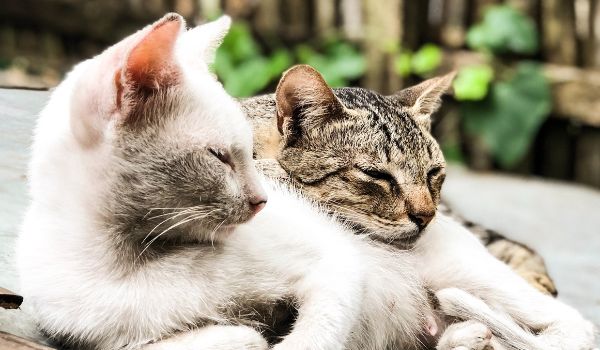
Cats that befriend each other tend to not only rub onto each other but also prefer to sleep side-by-side. As an extension of allorubbing, lying while in contact with each other or even using one another as a pillow is a show of strong social connection. The behavior, though initially shown in familial groups such as the one formed between a mother and her kittens and her caregivers or siblings, could also extend to other cats.
7. It is On Heat
If you have an un-spayed cat, she may only be visiting the neighbor’s cat for mating purposes. It is critical to understand kitten growth and its heat cycle to avoid any unwanted litter in your home. Signs like howling and excessive vocalization, raising her hindquarters, showing a receptiveness for mating, and urine marking are displayed during this period.
If she does display these and visits the neighborhood cats, the unneutered ones would be siring a litter arriving in a few months. If you don’t want your kitty to get pregnant, get her spayed. The best way to avoid cat pregnancy is to take it to the vet for the procedure early on.
It’s Not the Cat but the Neighbor
Ouch! Did we mention that the signs are strictly related to cat-to-cat behavior and may not be the only attraction beyond the warmth and comfort of your house? We understand that it may feel like a betrayal, but your cat could be just seeing your neighbor himself/herself and not their cat after all. The reasons could be varied, primarily the loneliness it feels when you are away, and it does not have anyone to receive the love and attention it so craves.
Second, it may have its needs fulfilled, but still, it could not hold itself from vising the other humans in the vicinity and found that they are more generous with food and toys. But it is not without negative implications for the health and emotional wellbeing of your cat, as he has expectations from someone who is only there part-time for the good stuff and not the entire responsibility.
Final Word: Is My Cat in Love with the Neighbor’s Cat?
Maybe, or maybe not. Cats do not love or forge friendships the way humans do, but they do form strong bonds. If you notice it displaying signs of affection like allorubbing, allogrooming, purring, and sleeping while in contact with the neighbor’s cat, it is indeed friends with her. But things can quickly go downhill if there is competition for resources or conflict.

